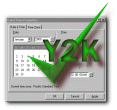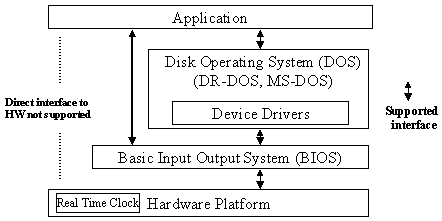

| Products | GY2K Readiness Disclosures | Search | Y2K Information |
| Printers | Data Collection | Software | Point of Sale |
 Statements
StatementsSymbol Technologies, Inc.
Scanner Products
Symbol has undertaken extensive testing of its Scanner products to determine Year 2000 compliance status. Generally speaking, a scanner is a data input device -- very much like a keyboard or a mouse. To that extent, scanners generally do not perform date functions or calculations, significantly reducing the potential for Year 2000 issues with these products. In addition, as scanners do not have Basic Input/Output Systems, or BIOS, there is little concern related to these products.
A few of Symbol's scanning products do include date stamping or other date-related functions (e.g. LS 856x Memory Scanner and LL 701/LL 746 Interface Controller); Symbol has tested these extensively to determine Year 2000 compliance.
Unless otherwise noted in the table below, the scanner products listed are Year 2000 compliant.
Symbol continues to test its products and the information here is regularly updated. Products that are not listed or that are older than those published may not be Year 2000 compliant. For products that cannot be made compliant, please contact your Data ID Sales representative or Services office for help in determining the best alternative for your operation.
Symbol reserves the right to update and/or change this information at any time without notice, as more information becomes available.
Product Model Number LS4005-Series LS4004- Series |
Description Eclipse Eclipse |
Q: Why can't I use an off-the-shelf test tool to test a Hand Held Terminal for the Year 2000?
A: There are differences between hand-held terminals and standard desktops that influence Year 2000 testing. Year 2000 test tools developed for standard desktops are not aware of these differences. As a result, erroneous results can occur in the testing. Symbol has developed test tools that are targeted to our hand-held terminals that decisively determine Year 2000 conformity status.
Hand-held computer terminals differ from desktop and laptop computers in a number of ways. One of the basic differences is that they are smaller and lighter in order to aid mobility when in use. Because of this size limitation, displays and keyboards need to be smaller and, therefore different than their desktop and laptop counterparts. In addition hand-held terminals feature devices, such as bar code readers and radios, which require extensions, in the form of device drivers, to the standard operating system. System resources, such as interrupts need to be reassigned in order to accommodate these devices.
The result of these differences is that hand-held terminals are not strictly compatible at the hardware level. PC compatibility is achieved at the BIOS level and is the best approach toward achieving the requirement for standard and convenient application development while meeting the physical and electrical requirements of hand-held terminals.
Figure 1 is a simplified software architecture block diagram for Symbol hand-held terminals. In every PC-compatible terminal there is a hardware platform. This is analogous to the motherboard on a desktop computer. The manufacturer of the hardware platform develops or integrates the BIOS that provides the interface to DOS. As shown in the figure, applications are at the top of the software hierarchy.
In general, in a PC-based architecture, applications can be developed to interface at the DOS level, BIOS level, or the hardware platform itself. The further one goes down in level, the less portable the application becomes. Symbol terminals that are based on the IBM personal computer architecture attain PC architecture compatibility at the BIOS level. This shields the application developer from hardware compatibility issues. The developer is restricted to the DOS and BIOS interfaces. This is reflected in Figure 1. This restriction is the reason why off-the-shelf Year 2000 testing tools are not sufficient. For example, if a test program attempts to interface directly to the real time clock in the hardware, erroneous results may be obtained.
The Y2K test tool developed by Symbol completely tests the BIOS and DOS time functions performed by Symbol terminals.

Statements contained herein are Year 2000 Readiness Disclosure Statements under the Year 2000 Information and Readiness Disclosure Act.